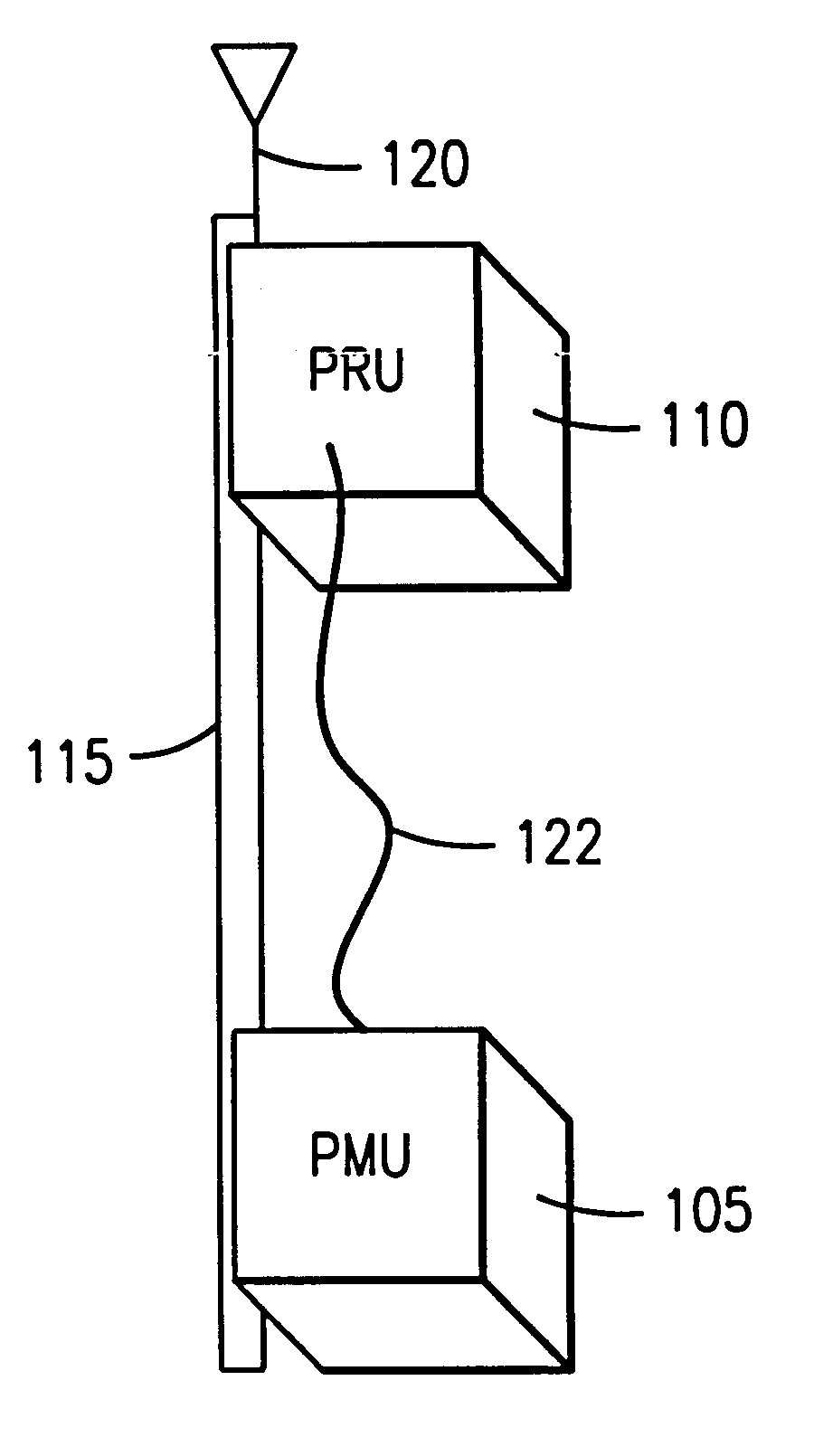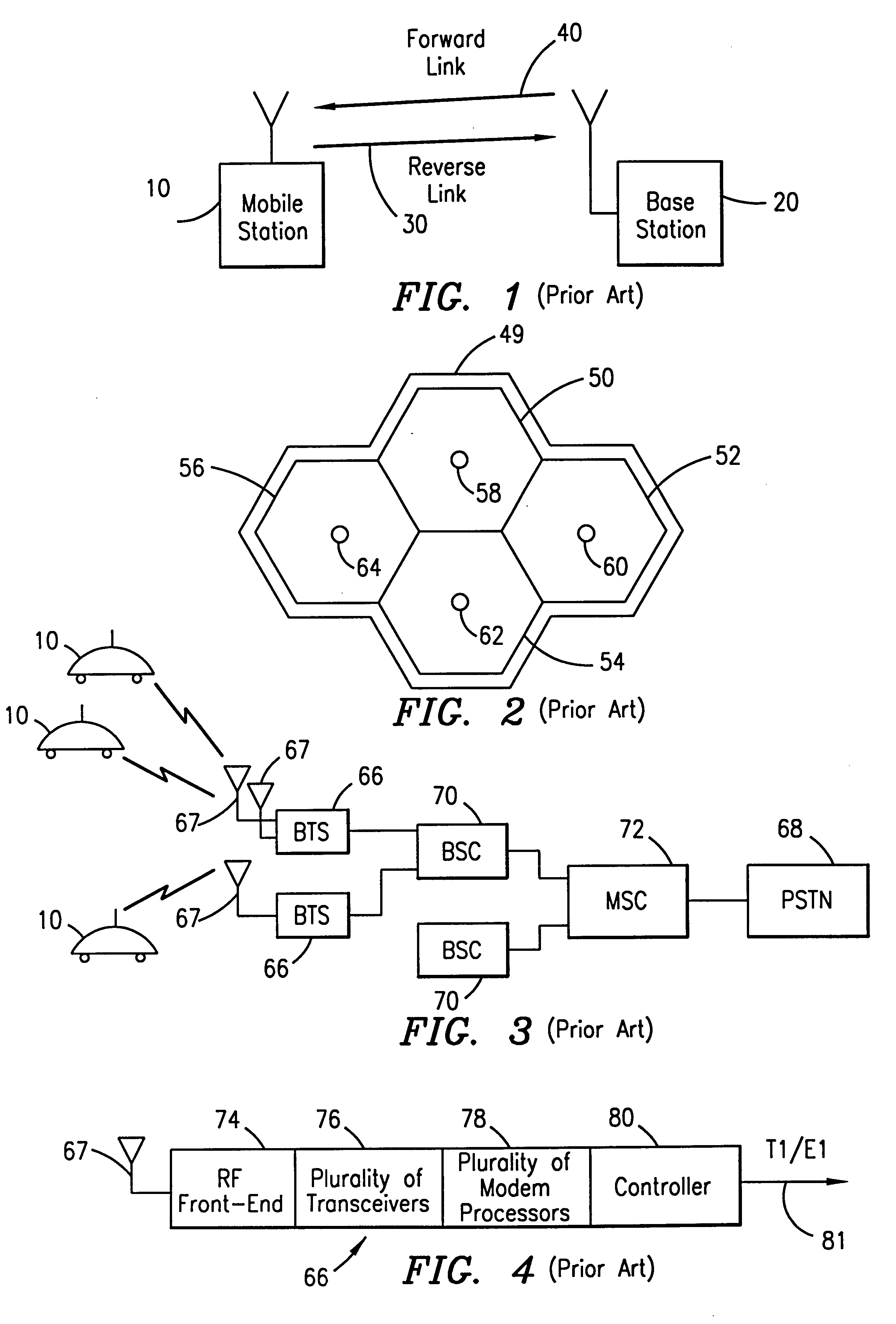Distributed architecture for a base station transceiver subsystem
a technology of base station and subsystem, applied in the field of wireless communication systems, can solve the problems of reducing transmission power, reducing receiver sensitivity, and suffering from undesirable power loss of cables of this length
- Summary
- Abstract
- Description
- Claims
- Application Information
AI Technical Summary
Problems solved by technology
Method used
Image
Examples
Embodiment Construction
In the description which follows, exemplary preferred embodiments of the invention are described for a Pico base station transceiver subsystem architecture. However, it will be understood that the present invention may be applied to any base station transceiver subsystem architecture in a wireless communication system, including, but not limited to, macro and micro base station transceiver subsystems.
FIG. 9 illustrates the basic idea underlying a base station transceiver subsystem (BTS) architecture according to an exemplary embodiment of the present invention--the BTS is separated into two units, the Pico-BTS Radio Unit 110 and the Pico-BTS Main Unit 105. In the exemplary system illustrated in FIG. 9, a Pico-BTS comprises the Pico-BTS architecture 100 which is divided into the Pico-BTS Main Unit ("Main Unit System," PMU or MU) 105 which may be located, as shown, at the base of a pole, tower, or other support structure 115, and the Pico-BTS Radio Unit ("Radio Unit System," PRU or RU...
PUM
 Login to View More
Login to View More Abstract
Description
Claims
Application Information
 Login to View More
Login to View More - Generate Ideas
- Intellectual Property
- Life Sciences
- Materials
- Tech Scout
- Unparalleled Data Quality
- Higher Quality Content
- 60% Fewer Hallucinations
Browse by: Latest US Patents, China's latest patents, Technical Efficacy Thesaurus, Application Domain, Technology Topic, Popular Technical Reports.
© 2025 PatSnap. All rights reserved.Legal|Privacy policy|Modern Slavery Act Transparency Statement|Sitemap|About US| Contact US: help@patsnap.com



